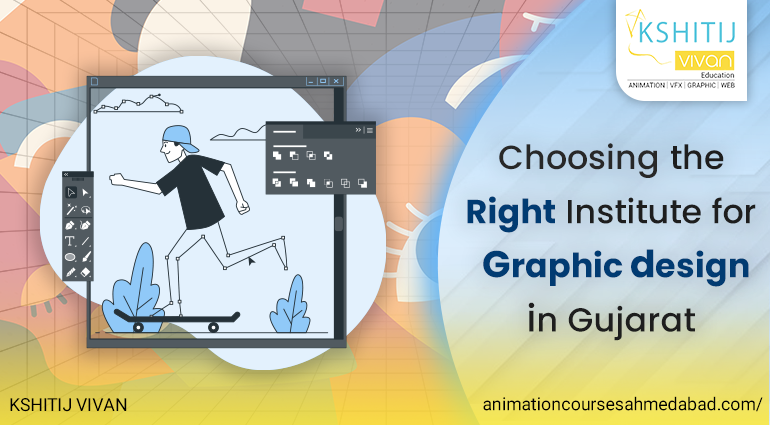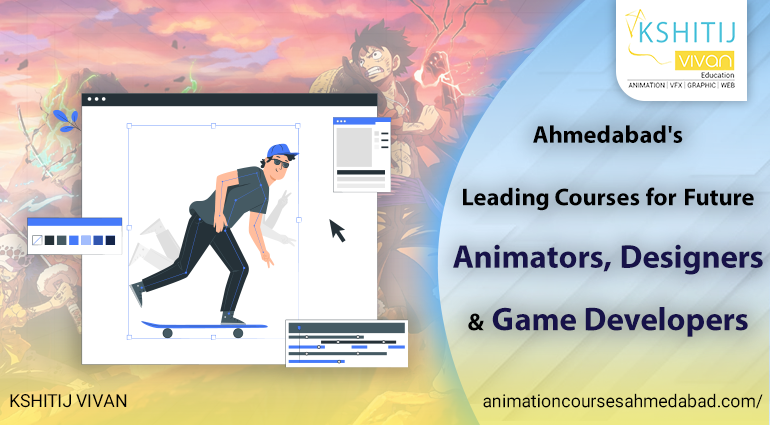
Learn Animation Using the Latest Tools & Techniques
In the present-time digital world, animation is more than just moving drawings—it is a strong form of storytelling, creativity, and communication of ideas.
Animation is Everywhere Like films, advertising, gaming, education, or social media. It found its way into almost every industry.
Kshitij Vivan Every smooth character movement or stunning visual effect is a combination of creativity, technical skills, and the use of the latest tools and techniques.
If you are fascinated by animated movies, video games, or digital art, now is the t time to turn that interest into a career. You can learn animation. Using the latest tools and industry-standard techniques.
Why Is Kshitij Vivan Education Important for Animation Courses?
Kshitij Vivan Education Service provides animation courses that mix creativity with technology.
You can share stories, feelings, emotions, and ideas. Do it through characters, movement, and images.
It is a fast and rapidly growing field. The demand for skilled animators is growing. Include things like movies, television, mobile apps, web series, or YouTube.
With the rise of AI, AR/VR, and 3D content, animation is no longer confined to just entertainment.
Industries like education, healthcare, real estate, architecture, and marketing now rely heavily on animated content to engage and communicate with audiences.
The Evolution of Animation Tools
Gone are the days of hand-drawn frames on paper.
Today, animation uses advanced software and tools. These provide precision, speed, and creative flexibility. Learning to use these tools isn’t just an option—it’s a necessity if you want to stay relevant in the industry.
Some of the most widely used animation tools include
-
Adobe Animate & After Effects: Perfect for 2D animations, motion graphics, and web animations.
-
Autodesk Maya & 3ds Max: Industry standards for 3D modeling, character rigging, and animation.
-
Blender: A free and open-source software that has become incredibly powerful for 3D animation and VFX.
-
Toon Boom Harmony: Widely used in TV animation production for frame-by-frame 2D animation.
-
Cinema 4D: Excellent for motion design, especially in commercials and digital content.
-
ZBrush: Great for sculpting high-detail character models.
In a modern animation course, you'll get hands-on experience with these tools. You will also learn how to use them effectively in different workflows.
Techniques That Matter
Learning software is key, but mastering animation techniques is what sets a pro apart.
The best animation courses show you how to use tools. They also teach you how to bring characters and environments to life through
-
Keyframing & Tweening: Understanding the foundation of movement.
-
Rigging & Skinning: Creating skeletons and controls for character animation.
-
Storyboarding: Planning your animation and visual storytelling before production begins.
-
Motion Graphics: Using animation in titles, logos, and explainer videos.
-
Timing & Spacing: Critical concepts that determine how natural or impactful an animation looks.
-
VFX Integration: Adding real-world effects like fire, smoke, particles, or lighting for realism.
-
Lip-syncing & Facial Animation: Especially useful in character-driven animations.
Courses that focus on traditional and modern animation techniques help you build a strong foundation while preparing you for real-world industry requirements.
Who Can Learn Animation?
You think animation doesn’t need a formal design or technical background to get started.
Whether you’re a school student exploring your creativity, a college student looking to specialize in media, or a working professional planning a career switch, animation is accessible to all.
All you need is an interest in visual storytelling, a bit of patience, and the willingness to learn new tools and techniques. Many courses are designed for complete beginners and gradually introduce you to advanced concepts.
Benefits of Learning with Modern Tools
When you learn animation using the latest tools, you not only gain practical skills but also improve your job prospects. Here's how:
-
Studio-Readiness: Animation studios and media companies often look for candidates with software expertise.
-
Faster Workflow: The latest tools allow you to create more in less time with higher quality.
-
Creative Freedom: Modern techniques open new possibilities—from realistic 3D animations to stylized 2D effects.
-
Freelance Opportunities: With the right tools and portfolio, you can work independently on client projects or create content for platforms like YouTube and Instagram.
-
Portfolio Development: Tools like Blender, Maya, and After Effects allow you to build a compelling portfolio that showcases your versatility.
What to Look for in a Excellent Animation Course ?
When choosing an animation course, make sure it offers:
-
Hands-on Training with industry software
-
Mentorship from Experienced Animators
-
Project-based Learning with real-world assignments
-
Portfolio Creation & Showreel Guidance
-
Internship or Placement Assistance
-
Access to Updated Resources (plugins, AI tools, rendering engines)
Courses that combine theory with practical training help you develop both technical and creative confidence.
Concluding Remarks
Animation is a dynamic and rewarding career path. But to succeed, you must keep up with the pace of change.
Learning animation with the latest tools helps you do more than just animate—it sets you up for a successful future in digital content creation.
No matter if you want to join a big animation studio, start your own creative agency, or become a content creator, mastering these tools gives you the edge. So don't just imagine your ideas—animate them!
Start your animation journey today with the right course and the right tools. Your future in motion begins now.


